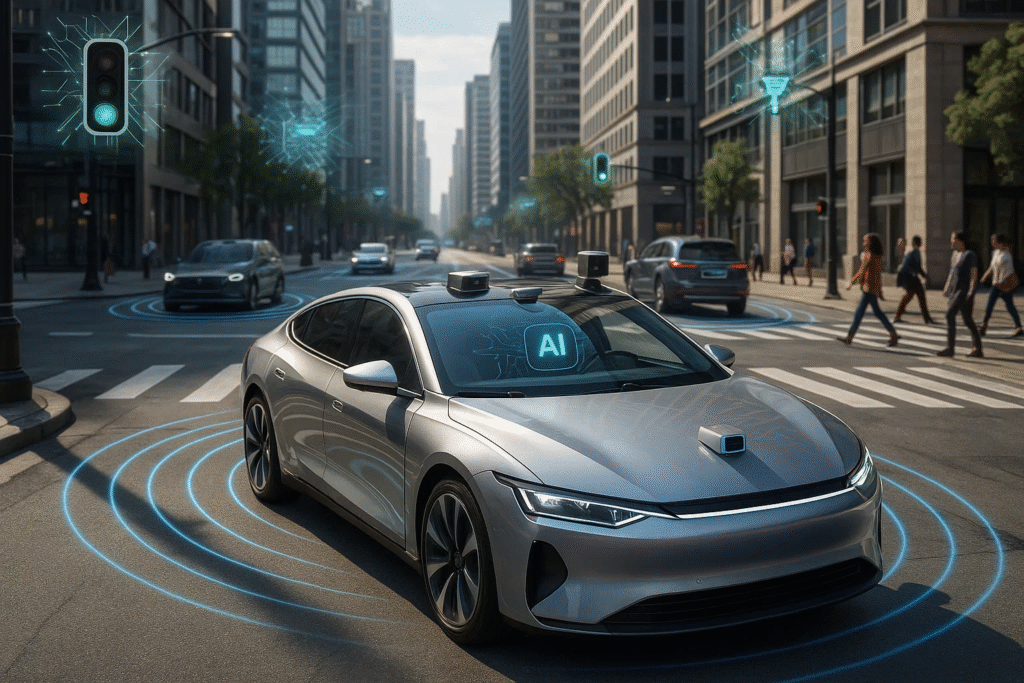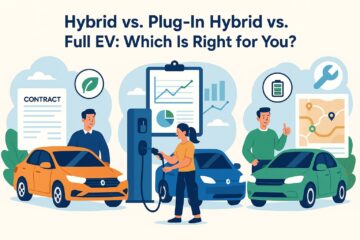
The Evolution of Autonomous Driving Technology
The driverless technology is well developed since the time it was a science fiction idea to a paradigm shift in the automobile industry. Entering the age of mobility, autonomous cars are not a mirage anymore, but yet a developing reality and with it comes an entire series of opportunities, which include safer roads, a greener tomorrow among other things. This article engages in the exploration of the autonomous driving concept, technology, and how it is going to transform the automobile industry.
What is the Autonomous Driving Technology?
Self-driving or autonomous driving is the term applied to describe cars capable of driving and steering independently. They use a combination of sensors, cameras, and artificial intelligence to respond and other road decisions in the real environment. The level of advancement of the technology is divided into automation levels from 0 to 5, where:
- Level 0: Zero automation (fully under the control of the driver)
- Level 5: Complete automation (vehicle drives by itself with no assistance)
Although fully self-driving vehicles are only at the testing stages, a number of existing vehicles have semi-autonomous functions such as adaptive cruise, lane deputy, and initialized emergency brakes, making the fully self-driving cars that much closer.
The Answer to Self-Driving Cars?
Autonomous driving is not a new concept as it had been in the works since decades but the first literal progress takes place in the late 20th century. The 1980s played host to research at the Carnegie Mellon University with autonomous vehicles that paved the way to the next step. However, this technology was not yet capable of enabling autonomous driving; computers were not sophisticated and sensor to detect the vehicle environment was at best in primitive state.
The first autonomous car test vehicle was introduced in 1995 by Mercedes-Benz, named Bertha, obeyed a previously entered driving route, although only slightly less limited and human-dependent.
The Effects of Technological Developments That Determined the Evolution
There are three important considerations that have led to the evolution of the autonomous driving technology:
1. Sensors and Cameras
Autonomous vehicles have high credence in using arrays of sensors and cameras to sense their environment. At initial stages, there was a simple radar and sonar then as technology advanced, LiDAR (Light Detection and Ranging) sensor has presented a revolution.
- Uses lasers to measure distances
- Generates 3D maps of the environment
- Identifies objects even in fog or rain
2. Artificial Intelligence (AI)
AI is the one driving the autonomous cars. It uses the information collected by sensors to make real-time decisions.
- Relies on machine learning algorithms
- Learns from experience and adapts
- Reacts to sudden events like pedestrians crossing or heavy traffic
3. Vehicle-to-Vehicle (V2V) Communication
V2V enables autonomous vehicles to communicate with each other.
- Enhances safety
- Improves traffic flow
- Shares data such as speed, location, and intentions
Major Developments in History of Autonomous Driving
A self-driving car ride has a long history highlighted by landmark events:
- 2009: Google (later Waymo) initiated self-driving car development
- 2015: Waymo completed first fully autonomous test drive in a Toyota Prius
- 2015: Tesla Autopilot released in electric cars
- 2020: Waymo One launched in Phoenix, Arizona – first ride-hailing service using self-driving cars
Issues under Development of Autonomous Vehicles
Despite impressive performance, fully autonomous driving still faces major hurdles:
Safety Concerns
- High-profile accidents (e.g., Uber in 2018)
- Technology reliability still questioned
- Ongoing work on safety algorithms, sensors, and redundancy systems
Ethical Dilemmas
- Decision-making in critical situations (e.g., pedestrian vs. passenger)
- Ongoing debates on ethics in AI judgment
- Lack of legal regulation for insurance and liability
Public Trust and Perception
- Public trust remains low due to past crashes and media scandals
- Resistance to adoption of semi-autonomous systems
- Requires open testing, education, and transparency
Automated Cars in the Future
The future is promising, with challenges and breakthroughs expected.
Full Autonomy (Level 5)
- Not yet achieved
- Technology is improving rapidly
Smart Cities and Infrastructure
- Cities will adapt with smart roads and V2X systems
- Navigation and communication systems essential
Environmental Impact
- Lower emissions
- Less fuel use due to optimized driving
- Reduced traffic congestion
Conclusion
It has been a mind-boggling journey in autonomous driving technology. Self-driving cars are a new reality that are going to turn our lives, activities, and even the transportation system to look and act differently. With the evolution of technologies, there will be even more innovations that will transform the transportation process being safer, more efficient, and more sustainable.
Although there are still some questions, the possible advantages of self-driving car technology cannot be overestimated, and the further outlooks are extraordinarily bright.










